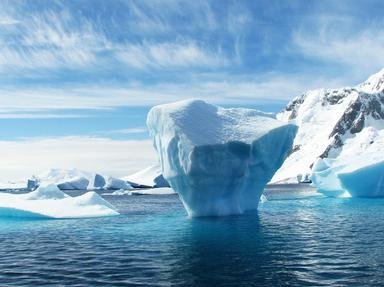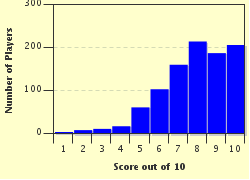Quiz Answer Key and Fun Facts
1. Several rivers bring freshwater into the Arctic Ocean, and whilst travelling, we might be able to see some of them. Which of these rivers would we definitely NOT see, because it does not empty into the Arctic Ocean?
2. Although we won't actually be diving on our trip, the deepest point in the Arctic Ocean, in the Eurasia Basin, is around half that of the deepest point in the world, the Mariana Trench.
3. Properly beginning our trip, we'll want to traverse the Northwest Passage. Named after the explorer who described it in detail, and adjacent to an island of the same name, which of these Arctic bodies of water is situated between Greenland and Northwest Canada, and is an entry to the Northwest Passage?
4. From the Inuit hamlet of Tuktoyaktuk, one could coolly look out to our next sea, which was named after an Irish hydrographer, although there has been dispute between the USA and Canada over its borders. Where are we now?
5. The Bering Strait, which lies just outside the Arctic Circle, terminates the Northwest Passage, which could lead us to the Pacific Ocean. However, we don't want to stop here! What is the name of the sea, named after its inhabitants, by which we could reach the Bering Strait?
6. The East Siberian sea has a particularly harsh terrain, and is one of the least studied seas in the Arctic Ocean. Which of these island groups, with a highest elevation point of only 374m, separates the East Siberian Sea from the Laptev Sea?
7. The Laptev Sea can reach temperatures of -50C and flora, fauna and human influence is relatively low, so we had cold feet at the prospect of staying here for long! However, it does have another claim to fame; is it true or false that the Laptev Sea has the greatest amount of glacial shrinking in the Arctic Ocean?
8. Our next stop, the Kara Sea, holds many secrets. Which of these facts about the Kara Sea is false?
9. We've braved the worst of the journey, since North Atlantic drift helps to bring a surprising amount of wildlife to our next sea, and it is an important fishery to Norway and Russia, which lie to the south. Although it used to be named the Murman Sea, what is the name of this chilly expanse today?
10. Before we can chill out, we must navigate the final sea in our journey, which both borders and shares its name with the largest island in the world. This sea also borders Iceland and the Norwegian Sea to the south, and the Svalbard Archipelago to the east. Where are we?
Source: Author
malik24
This quiz was reviewed by FunTrivia editor
Pagiedamon before going online.
Any errors found in FunTrivia content are routinely corrected through our feedback system.

